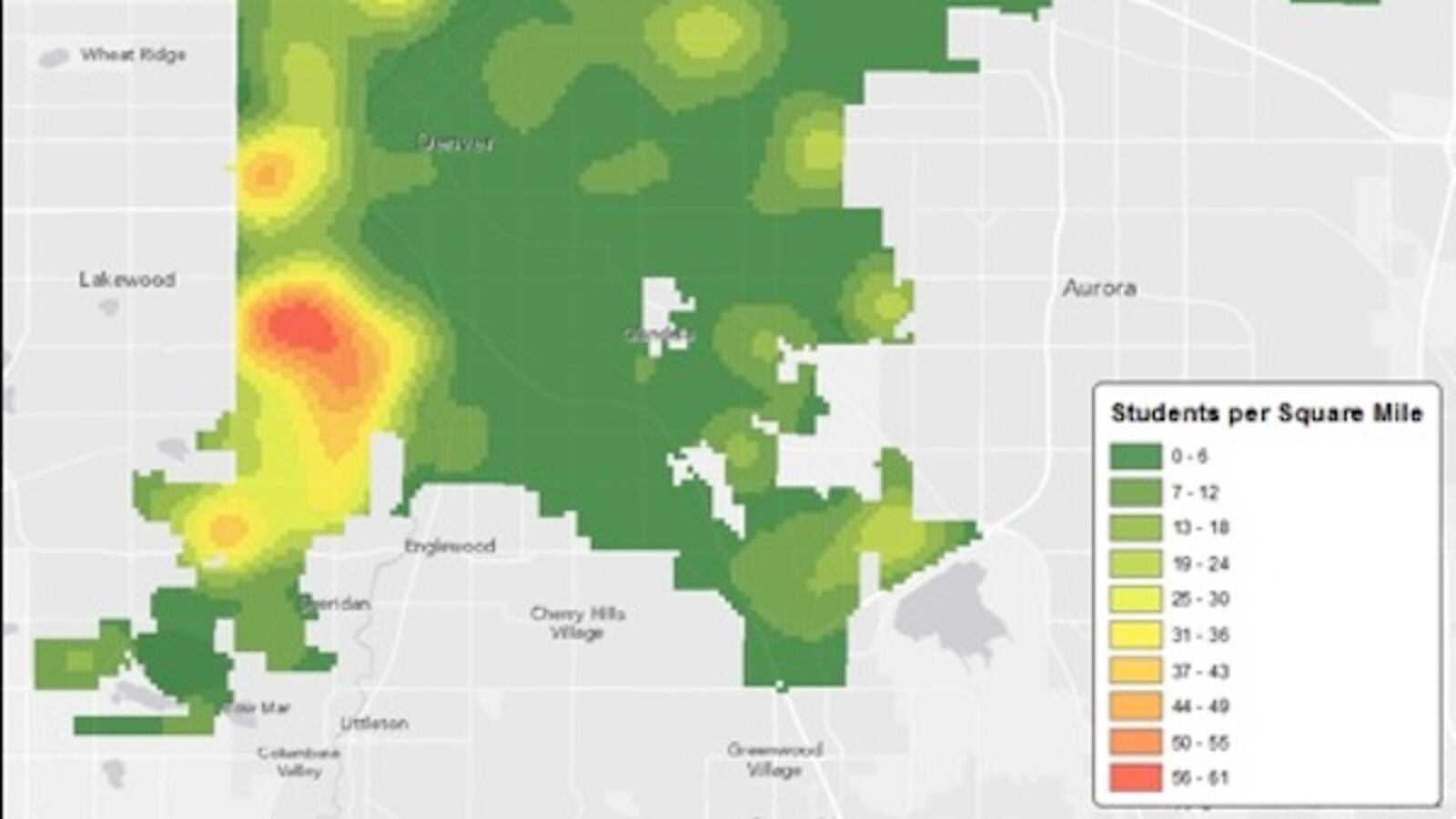Fewer students who participated in Denver’s school choice process got one of their top schools, despite a slight decline in the number of participants.
Denver’s SchoolChoice process is a three-year old initiative billed as “one form, one timeline, all schools,” which aimed to make school enrollment fairer. Parents submit up to five choices for potential schools. Those who do not participate or do not get one of their five choices are automatically enrolled in their neighborhood school. This year is the first since the system’s launch in 2011 in which the number of participants who received a top choice declined.
District officials are trying to figure out what caused that drop. One theory is that more people applied to the district’s most competitive programs.
“Even though there are fewer participants, more people may be pursuing high quality programs,” said Brian Eschbacher, who heads the district’s planning and choice department. That, he said, is the goal of the process: for parents to be able to choose the best program for their children.
For students entering kindergarten, middle or high school, 94 percent of applicants got one of their choices. Only 23 participants who listed five choices were not placed in any of them. However, 439 of the so-called “transition grade” applicants who listed at least one choice but not necessarily five were not placed in a school.
Across grade levels, over 2,000 people who participated in the process did not receive a choice placement and were assigned to their neighborhood school, an increase of more than 300 over last year.
In total, 22,729 people participated in the choice process (one percent fewer than last year), while 3,154 people sat the process out and opted to be automatically enrolled in the neighborhood school. At 94 percent, white families had the highest rates of participation, followed by multiracial (90 percent) and Asian applicants (88 percent). Participation rates for Hispanic and black families hovered at 84 percent.
Some regions of the city were more active the process than others. The Far Northeast, where the district has eliminated enrollment boundaries and embarked on an aggressive campaign to encourage participation in choice, saw the participation rates of 90 percent or better in all transition grades.
Eschbacher said it shows that “with good outreach, we can get a low income neighborhood to have the highest participation rate in the city.”
By contrast, in the southwest region of the city, just 54 percent of ninth graders submitted an application.
“I think we were all a bit shocked,” said Alisha Anusencion, who works with Eschbacher. Eschbacher’s team will be looking at how the strategies the district is using in the Far Northeast, including a school choice office, can be spread to other parts of the city.
For more, see the full presentation here.
Note: this article has been updated for clarity.

